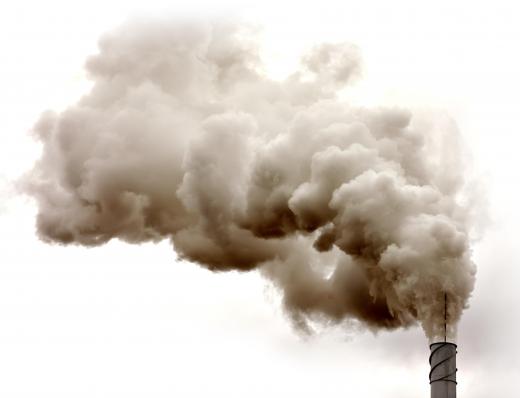Environmental air purification is a difficult but necessary part of modern industrial business. This cleansing task traditionally is done by a pollution control device called a wet scrubber, but dry scrubbers are needed for certain cases. The primary function of the dry scrubber is to remove acid gases from combustion sources. This is accomplished by firing a series of dry ingredients at high speeds into the gases to neutralize pollutants. This is accomplished in three steps: the gas cooling system, the reagent injection and the filtration system.
The gas cooling system of a dry scrubber is an important first step in preparing exhaust gases for the environment. Cooling an emission gas makes it easier to remove the pollutants and toxins from the gas. This is accomplished by diluting the air, using an evaporative cooler, a boiler or a heat exchanger. Each is used in different industries and on different types of combustion gases. No matter how the air scrubber cools the gas, it is an essential component for preparing to inject the reagent.

The reagent injection system of a dry scrubber is where the detoxification occurs. During this stage, various ingredients are mixed to purify the air. Hydrated lime and sodium bicarbonate are two commonly used elements because of their acid-reduction qualities. These powders are either mixed into a slurry and small droplets are sprayed into the air stream or the dry ingredients alone are fired at high pressure into the combustion gas. The basic chemical makeup of these ingredients counteracts the acidity of the gas and leaves cleaner air for the environment.
The fabric filter system captures the spent hydrated lime or sodium bicarbonate as the cleansed gas passes outward into the environment. The filter creates a cake-like substance that has absorbed much of the toxicity. Many times, these elements can be cleansed and reused for dry scrubbing, but they often must be disposed of when they cannot be properly washed. These cake-like collections contain hazardous material and they must be handled by waste specialists.
Dry scrubbing has been embraced by many industries, typically those that come under fire for being harmful to the environment. From wastewater treatment plants to boilers to municipal waste incinerators, these systems are found around the world. If studies continue to show that these devices have been linked to successful drops in greenhouse gases, their popularity likely will grow.
